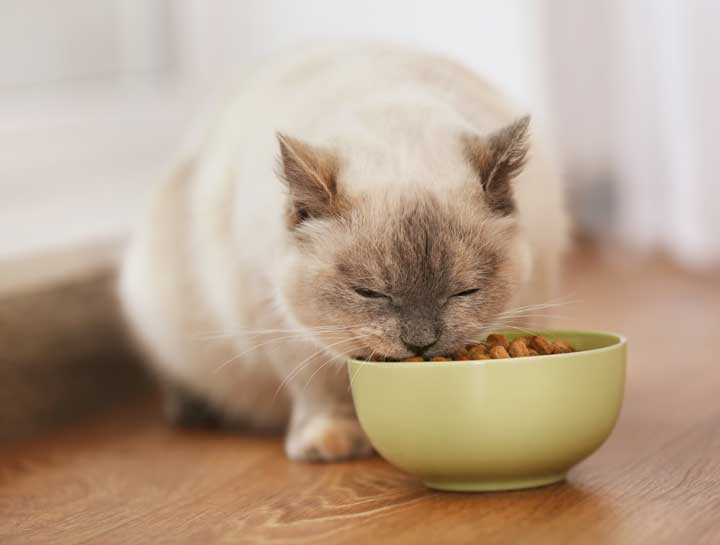What Should I Feed My Cat?

It can be overwhelming, can’t it? Walking down the cat food aisle at the grocery store or pet store. So many types of cat food – dry food, wet food, pouches, “grain-free”, “natural”, “limited ingredient”, “gentle”, so many brands – all claiming to be the best for your cat or to help with various medical concerns.
We are here to help! Hopefully the information in this blog will help to simplify your decision. Here is what you need to know:
- Pet food is a multi-billion-dollar industry! Most of the marketing claims about cat food are just that – claims, with little to no evidence backing them up.
- When the sales person at the pet store tries to sell you the latest and greatest new diet, remember that this diet can be marketed and sold without having been fed to a single cat! All they need is a computer program that tells them that the food is calculated to meet certain minimum requirements. Do you want your cat to be the first one to eat an untested food?
- “Grain-free” is a marketing ploy, as simple as that. Pet food manufacturers are using trends in human food preferences to sell their diets. Grain-free diets may still be very high in carbohydrates; they just change the type of carbohydrates from corn and wheat to broccoli and carrots. It may be true that cats are not designed to eat grains, but neither are they designed to eat vegetables. In fact, over the past few years there has been an increase in heart disease, mostly in dogs, but also found in some cats, that has been potentially linked to grain-free diets. So not only is grain-free food not healthier for your cat, it may actually be dangerous.
- Many of the claims on pet food labels have no definition with AAFCO, the group that oversees pet food labeling. I have seen “weight control” diets that have over 450 calories per cup –too high for most cats, especially one that needs to lose weight. Also, the recommended amounts of food to give your cat daily on the pet food label are generated by the manufacturer and are almost always significantly too high. You can estimate your cat’s daily calorie requirements by using their weight in pounds, divide by 2.2, multiply by 30, then add 70. Using this formula, the average 11-pound cat would require 220 calories per day. This includes calories from all food sources – dry, canned, treats and people food.
- Raw food is great in theory. But in reality, raw foods are recalled all the time for contamination with bacteria such as E. coli, Salmonella, and Listeria. Not only can these bacteria be dangerous for your cat, they can also be dangerous for young, elderly, or immunocompromised people living in your home. Also, many raw foods are dangerously unbalanced with regard to mineral composition. Excesses of minerals can be just as dangerous as deficiencies.
So what should you feed your cat? Here are our recommendations:
- Throw away your dry food bowls. Dry food is high in carbohydrates and has been associated with obesity and diabetes. Feed a majority canned food diet – canned food has more fluid, less carbohydrate, more protein and is less calorie-dense than dry food. Pick brands that are high in protein, such as Weruva, Tiki Cat, or even Fancy Feast Classic varieties.
- Give small amounts of dry food in feeding toys or puzzles or hide pieces of food around the house to encourage physical and mental stimulation. A dental diet such as Hill’s t/d may be ideal to use in these situations.
- Instead of commercial treats, cook some chicken breast or salmon, cut it into small pieces, and freeze in small sandwich bags. Every few days take a bag out of the freezer and use to treat your cat.
Article by Janet K. Cohn, DVM, Board-certified in Feline Medicine
